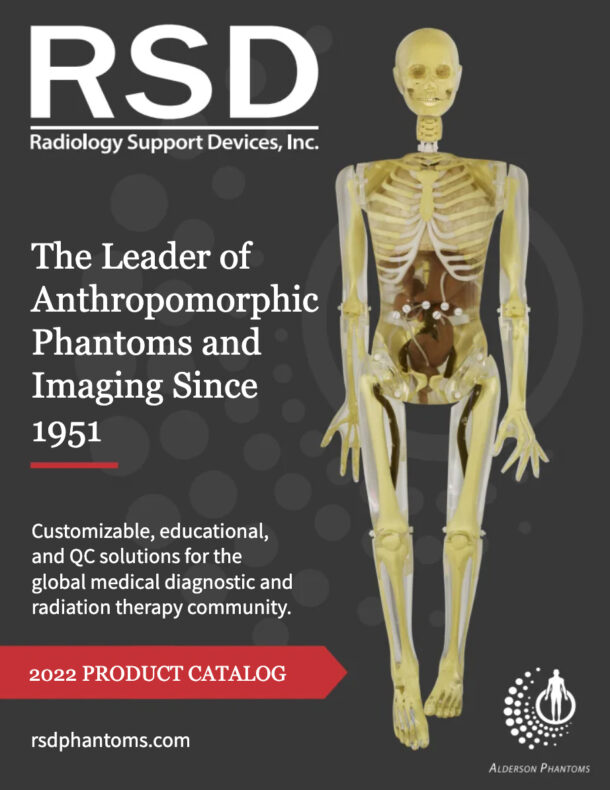The Lawrence Livermore Realistic Phantom
WORLDWIDE REFERENCE STANDARD FOR IN-VIVO COUNTING
The Lawrence Livermore Realistic Phantom was developed under the direction of the U.S Department of Energy, primarily as a reference standard for the in vivo counting of emissions from low-energy transuranic nuclides.
Please contact RSD for organ, capsule, and chest overlay options, as well as isotopic orders.
Jump To: Model Number | Applications | Publication References
The organs of interest are the lungs, liver and lymph nodes. Each of these may be radioactive or inert. These organs are accommodated in a male thorax generally similar to average adult males.
This phantom contains a synthetic bone skeleton molded within a soft-tissue-equivalent material. The organs are located in an internal cavity with a separate torso cover that closes the phantom. Anterior sections of ribs and the sternum are molded into this cover.
Soft-tissue-equivalent blocks are used to position the organs and fill significant air spaces, providing continuity of the soft tissues throughout the phantom. The phantom is shipped assembled with inert organs. Any or all of these organs can be replaced with radioactive organs, which are shipped in separate packages.
Organs
The liver has the same loading flexibility with an additional option designed for use with solutions having relatively short half-lives. This liver is a hollow shell with a fill/drain port.
If the liver is not required, it may be replaced with the Abdominal Contents, which are also available with a hole matrix, or active.
Lymph nodes are available as hollow shells or as active packets. Two are 8 mm in diameter by 17 mm long. A third is 13 mm in diameter by 25 mm long. They are positioned in recesses molded in a lymph node block.
Chest Overlay Plates
There are three sets of plates, each in four graded thicknesses. One set is equivalent to 87% adipose and 13% muscle, another is equivalent to 50% adipose and 50% muscle, and the third is equivalent to 100% muscle. Plates of each material and/or each thickness are available separately.
Targets
A 2cm2 grid is projected in red ink over most of the chest surface by the same technique that is used for the circles. All targets are consistent among all phantoms.
Isotopes
RSD routinely manufactures active organs with isotopes to suit users’ needs. Active capsules to fit into the gridded holes are available, or empty capsules can be supplied to be filled by the user.
RSD usually supplies the required isotopes, but users may furnish them if so desired.
Isotopes are most often received as calibrated solutions, traceable to the NIST. Organ loading is controlled by micropipetting aliquots from the calibrated solutions. Uraniums and plutoniums are traceable to the NIST by mass. Other isotopes are usually traceable by activity.
Some isotopes are manufactured only at intervals throughout the year, so delivery is subject to availability. In some cases, calibration costs from governmental sources are subject to wide fluctuations.
Model Number
| RS-500 |
Applications
- Calibration standard for the quantitation of in vivo radioactivity
- Detector calibration for photons deposited in human organs
- In vivo counting of emissions from various isotopes
- Organ bioassays for various isotopes
Publication References
Acha R, Brey R, Capello K. A Monte Carlo Simulation of the In Vivo Measurement of Lung Activity in the Lawrence Livermore National Laboratory Torso Phantom. Health Phys. 2013 Feb;104(2):211-7. PMID: 23274824. DOI: 10.1097/HP.0b013e3182765834
Ahmed AS, Capello K, Kramer GH. Assessment of the Chest Wall Thickness of the Lawrence Livermore Torso Phantom Using a Voxel Image. Health Phys. 2011 Jun;100(6):574-82. PMID: 22004927. DOI: 10.1097/HP.0b013e3181ff952f


